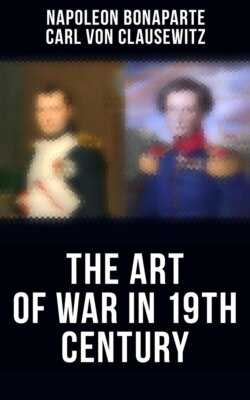Читать книгу The Art of War in 19th Century - Carl von Clausewitz - Страница 6
На сайте Литреса книга снята с продажи.
ОглавлениеMAXIM II.
Table of Contents
In forming the plan of a campaign, it is requisite to foresee everything the enemy may do, and to be prepared with the necessary means to counteract it.
Plans of campaign may be modified ad infinitum according to circumstances—the genius of the general, the character of the troops, and the topography of the theatre of action.
NOTE.
Sometimes we see a hazardous campaign succeed, the plan of which is directly at variance with the principles of the art of war. But this success depends generally on the caprice of fortune, or upon faults committed by the enemy—two things upon which a general must never count. Sometimes the plan of a campaign, although based on sound principles of war, runs the risk of failing at the outset if opposed by an adversary who acts at first on the defensive, and then, suddenly seizing the initiative, surprises by the skilfulness of his manœuvres. Such was the fate of the plan laid down by the Aulic council for the campaign of 1796, under the command of Marshal Wurmser. From his great numerical superiority, the marshal had calculated on the entire destruction of the French army, by cutting off its retreat. He founded his operations on the defensive attitude of his adversary, who was posted on the line of the Adige, and had to cover the siege of Mantua, as well as central and lower Italy.
Wurmser, supposing the French army fixed in the neighborhood of Mantua, divided his forces into three corps, which marched separately, intending to unite at that place. Napoleon, having penetrated the design of the Austrian general, perceived the advantage to be derived from striking the first blow against an army divided into three corps, with no communication between them. He hastened, therefore, to raise the siege of Mantua, assembled the whole of his forces, and by this means became superior to the imperialists, whose divisions he attacked and beat in detail. Thus Wurmser, who fancied he had only to march to certain victory, saw himself compelled, after ten days campaign, to retire with the remains of his army into the Tyrol, after a loss of twenty-five thousand men in killed and wounded, fifteen thousand prisoners, nine stand of colors, and seventy pieces of cannon.
Hence, nothing is so difficult as to prescribe beforehand to a general the line of conduct he shall pursue during the course of a campaign. Success must often depend on circumstances that cannot be foreseen; and it should be remembered, likewise, that nothing cramps so much the efforts of genius as compelling the head of an army to be governed by any will but his own.
